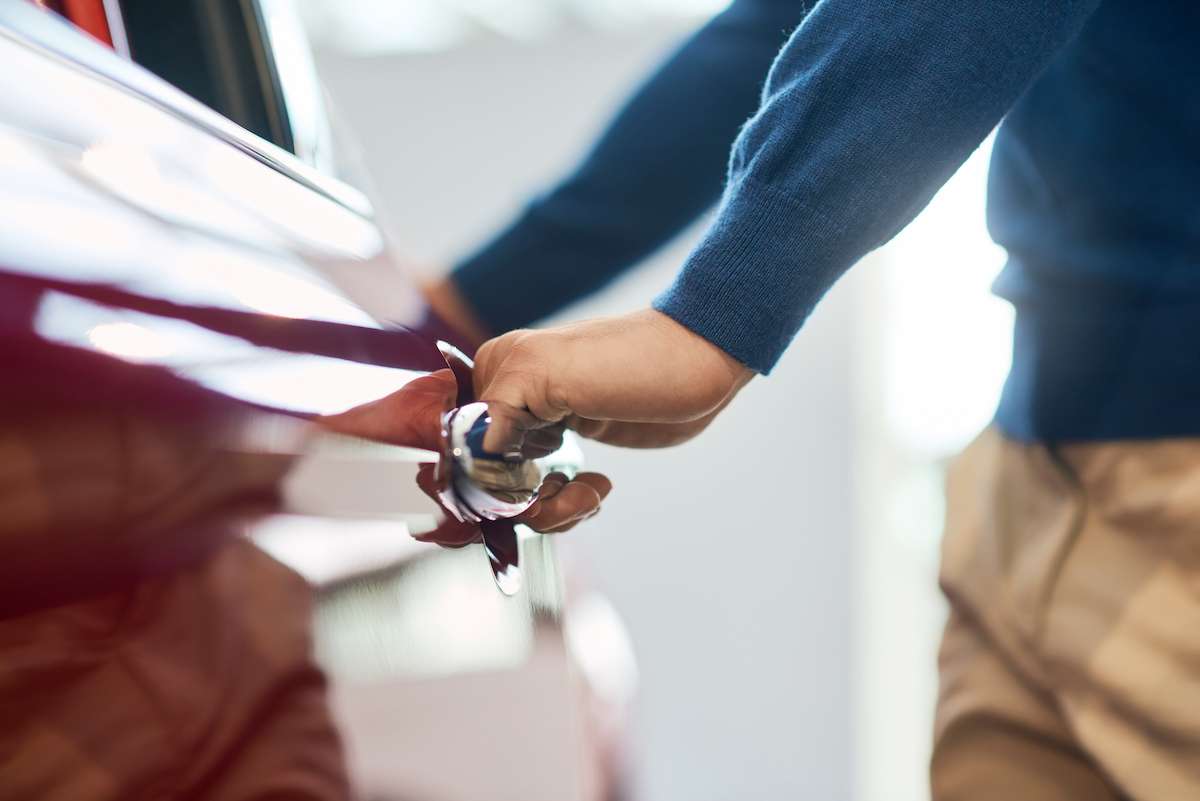Does Slamming Car Doors Damage It? [Here’s What to Know!]
Vehicles undergo numerous stress tests to ensure they can withstand various conditions in the real world. So, it may seem like slamming a car door won’t do much damage, but the truth is it can be more harmful than most people think, and the repairs can be pretty costly.
Slamming the car door frequently can damage parts like the door latch, locks, and window mechanisms. It will also cause the weather stripping to wear out faster, so car doors should be closed as gently as possible.
Keep reading if you want to uncover everything you need to know about slamming car doors. This article will discuss why some people slam doors, the effects, and how to prevent it from happening.
What Is Considered Slamming
Merriam-Webster defines slam as a noisy, violent closing or shutting forcibly and noisily. However, what may seem like a forceful or violent closing to you may not be to others.
So, given the subjectivity of what may be considered slamming, it would be better to say that slamming is when excessively more force is applied than required to close the door completely.
But just how much force is required to close a car door?
Door Closing Effort
There’s a sweet spot regarding how much effort is required to open and close a car door. The door has to be light enough to be easy to move around, but it also needs to have enough heft for customers to have a good perception of its quality.
Automakers understand that the effort needed to close a door plays a huge role in how their customers will perceive their brand since the door is usually the first part of the vehicle the customer interacts with upon visiting a showroom.
The following aspects of opening and closing a door affect the customer’s impression of the car’s quality:
- The effort exerted to open and close the door.
- The speed the door closes.
- The sound the door makes when closing.
But aside from making a good impression on customers, car manufacturers must meet other requirements such as:
- Structural rigidity and sag resistance.
- NVH (Noise Vibration and Harshness) suppression.
- Crashworthiness during side-impact collisions.
- Durability.
- Manufacturability.
Given everything automakers have to consider, it goes to show that car door design is more complicated than it appears. Fortunately, advancements in research and technology have made doors safer yet considerably easier to open and close.
It’s hard to quantify the force needed to close a door, but you can shut a modern car door with the same effort required to close a refrigerator. Older cars with heavier doors require more elbow grease to close.
Why People Slam Doors?

It’s easy to conclude that using excessive force to shut a car door is a form of inconsideration or a sign of being upset. However, the act of slamming a door may also be unintentional.
Vehicles come in different shapes and sizes, and it would be remiss to think every car door requires the same effort to close. If someone becomes accustomed to a door that’s difficult to close, that person would likely end up inadvertently slamming other car doors.
Below are some factors that impact the effort needed to close a car door:
- The weatherstrip. As a seal that isolates vehicle occupants from water, wind, and noise, the weatherstrip has the most significant impact on door closing velocity.
- The pressure difference between the interior and exterior of the car. If air has nowhere to escape, it will be more difficult to shut the door.
- The weight of the door. A lighter door is easier to close.
- The distance between the hinge axis and the center of gravity. A larger distance improves the time taken to close the door.
- The hinge axis. A slightly tilted hinge axis allows gravity to help in decreasing the effort needed to close the door.
Aside from the way a car is designed, worn-out components like the hinges and latching mechanism can make it more challenging to close a door. Older cars or those involved in an accident can have misaligned doors that are also difficult to close.
So, if your car’s door is less difficult to shut than most other cars, you may have to deal with people slamming your doors more often. As annoying as it is to have someone slam your car’s door, you should try not to take it personally since it might just be muscle memory at work.
Damage Caused by Slamming Car Doors
A car may not sustain immediate damage upon having its doors shut with excessive force, but slamming the door can cause specific components to wear out or break in the long run.
Ironically, damaged or worn-out parts of a door will make it more difficult to close, which compounds the issue. Slamming the door causes defects requiring the vehicle occupants to use even more force to close the door fully.
This portion of the article will discuss the specific components at risk of breaking.
Weather Stripping
The rubber seals around the doors keep elements like water, wind, and dirt from entering the vehicle’s cabin. Slamming the doors puts additional strain on the rubber, causing it to thin out prematurely.
Worn-out weather stripping will drastically affect NVH suppression aside from allowing dirt and water to contaminate door components, which can cause more problems.
Latching Mechanism
Slamming the door can damage the latching mechanism, which keeps the car door closed. The door strike in latching mechanisms moves up and down to hold and release the door as needed.
A violent slam can cause the striker to get stuck or misalign the latch with the door anchor, making it difficult to open or close the door.
Hinge Pins and Bushings
The door’s hinge pins and bushings also risk getting damaged when the doors a slammed occasionally. If the pins and bushings on the hinges get worn out, the door may begin to sag and become misaligned.
Window Regulator
One major mechanical component inside a car door is the window regulator, which keeps the window level as you raise and lower it.
The impact from slamming the car door can rattle the window regulator, causing mechanical failure or the window to lose alignment.
Other Internal Door Components
The car door houses many other components that risk getting damaged each time excessive force is used to close the door.
These components include:
- Power window motor and switches.
- Central locking actuators.
- Speakers.
You can sometimes repair damaged door components, but you may have to replace them if the damage is severe.
To give you an idea of how expensive the parts can be, check out this other article that I published earlier, which shows the cost of door parts from different automakers.
How To Prevent Car Doors From Being Slammed?
One way to prevent your car door from being slammed is to remind your passengers to close the doors gently when stepping out.
However, reminding your passengers to do something that seems basic may be awkward and will not always be on the top of your mind. Fortunately, there are products you can buy that can lessen the impact when someone slams your car door.
The YaoQuiYou Car Door Shock Absorbers (available on amazon.com), made of high-quality PVC material, can help cushion the car door and minimize impact when forcefully closed. This product is also self-adhesive for easy installation. You can install several pieces on your door or trunk frames for added protection.


![Car Accelerating On Its Own? [Reasons & How to Fix!]](https://vehicleuniversity.com/wp-content/uploads/2022/10/car-driving-the-norwegian-national-road-64-known-a-2021-08-26-16-34-54-utc-768x511.webp)
![Car AC Takes A While To Get Cold? [Here’s Why & What To Do!]](https://vehicleuniversity.com/wp-content/uploads/2023/01/girl-driver-has-problem-with-non-working-condition-2022-11-15-04-07-21-utc-768x512.jpeg)
![Car AC Compressor Turns On And Off? [Meaning & Reasons!]](https://vehicleuniversity.com/wp-content/uploads/2023/01/ac-ventilation-deck-2021-08-26-17-12-30-utc-1-768x510.webp)
![How to Recondition a Car Battery? [Full Guide!]](https://vehicleuniversity.com/wp-content/uploads/2023/01/Car-Battery-Corrosion-on-terminals-768x480.webp)
![Car AC Compressor Running But Not Cooling? [Here’s Why!]](https://vehicleuniversity.com/wp-content/uploads/2023/01/woman-turning-on-car-air-condition-system-on-dashb-2022-02-18-21-32-10-utc-768x512.webp)
![Does AC Drain the Car Battery? [With Test Results!]](https://vehicleuniversity.com/wp-content/uploads/2023/01/ac-ventilation-deck-2021-08-26-17-12-30-utc-768x576.webp)